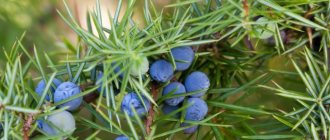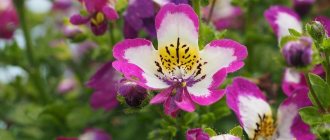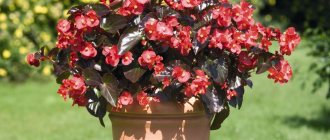Varieties and varieties of papaya
Today there are over a thousand varieties of papaya, which differ not only in shape and size, but also in taste. The most delicious fruits are those with green and orange skin. If you don't like removing seeds from fruits, choose green fruits. Orange ones are purely visually more attractive, but they have much more seeds.
Breeders have developed a huge number of papaya varieties. Suitable for home gardening:
- Hawaiian - with small oval fruits, orange in color, and flesh of a more saturated shade;
- Dutch - oblong, light orange, with sweet pulp that tastes like strawberries;
- Ranchi - with juicy and sweet fruits, practically odorless;
- Long - with green zucchini-shaped fruits, juicy and moderately sweet;
- Washington is spherical, yellow, with very tasty sweet flesh of a bright orange color.
Several more varieties of papaya are popular among indoor plant lovers:
- small green - with small sweet orange fruits;
- pink-red – with excellent taste;
- red embossed - with an unusual surface of the fruit and very tasty red pulp.
- All varieties and varieties of papaya reproduce equally. How exactly - read below.
Graceful "tropical" in the northern hemisphere
Melon tree - Papaya is found in Central and South America, Mexico, Australia and Africa. In countries with cold climates, it is cultivated as a houseplant that bears fruit. In appearance, the tree resembles a slender palm tree, as its graceful trunk extends upward. It is colored green or purple. The lush crown consists of large foliage, which is collected in the so-called umbrella. The maximum leaf size is approximately 70 cm. Fleshy buds periodically appear at the base of the plates. Over time, they turn into exotic juicy fruits.
Papaya is widely used in cooking because it contains many vitamins and microelements.
There are different types of papaya, which differ in gender. As a rule, male trees pollinate the inflorescences, while female trees produce fruit. Ripe fruits are yellow or amber in color, and the flesh is reddish.
Inside the fruit there are black seeds, of which there are from 300 to 600 pieces. Interestingly, the plant can change its gender if its top is cut off. Sometimes this happens when the room temperature is kept high for a long time.
Papaya fruits are a dietary product, so it is advisable to include them in the diet of obese people.
Growing papaya from seeds
Not so long ago, even the name of such a fruit as papaya was known to few. Many people could only dream of growing this tree. But times are changing. Recently, papaya has become one of the most popular tropical plants for heated verandas and balconies or enclosed terraces. Despite the fact that this tree is not one of the easiest to care for, it is readily grown by both experienced plant growers and beginners.
Growing from seeds is the easiest way to get your own tree, moreover, adapted to the conditions of your apartment, and therefore less capricious to care for. Attention, care and patience will help you grow this exotic and, perhaps, even enjoy its sweet fruits. But even if your papaya does not bear fruit, it will become a real decoration for your home greenhouse.
Choosing a fruit for seed germination
The papaya whose seeds you decide to sow must be completely ripe - not overripe, but not green either. If you just want to grow a beautiful tree, the taste of the fruit does not matter. But if you plan to taste the fruits of this exotic plant for a year or two, try to choose the tastiest and largest papaya.
Some sources advise drying the seeds for 24 hours before sowing. In practice, it turns out that much greater germination can be achieved by sowing fresh seeds that have just been extracted from the fruit. You can try sowing some of the seeds immediately, and leaving some to dry, and then compare the result.
Appearance of fruits, taste characteristics, harvesting
The tropical tree reaches a height of 10 m. The plant secretes milky sap. With large branches with large, wide, palmate leaves, it resembles a palm tree. Flowers form in the leaf axils, subsequently transforming into fruits.
The early fruits are green in color and grow in clusters like coconuts. When ripe, they acquire a yellowish or amber hue. The length of 1 fruit is sometimes 0.5 m, and the weight ranges from 1 to 4.5 kg. There are also very large fruits weighing 7-8 kg.
In southern countries, the tree bears fruit all year round. The tree grows very quickly, and the tree produces its first harvest 1 year after planting. Harvesting is recommended with caution - the secreted latex juice can cause an allergic reaction.
Main signs of ripeness:
- moderate softness, elasticity;
- yellow, bright yellow or slightly orange surface;
- dense, smooth peel;
- pleasant aroma reminiscent of melon;
- orange or reddish flesh with pinkish splashes (although in some varieties it is green).
The tropical berry tastes like a ripe melon, but some people who have tasted papaya compare it to carrots, apricots and even zucchini. Inside the berry there is a large number of black seeds connected to the pulp by fibers. The photo shows a cross-section of a papaya; the smooth round grains concentrated in the central part of the fruit are clearly visible.
There are different varieties of papaya:
- “California” or “Holland” papaya with small yellow fruits, pinkish on the sides, tastes like chocolate or latte, is in demand among gourmets.
- Exotic red papaya with a textured surface and characteristic scarlet pulp, which has a sweet but not cloying taste.
The alkaloid carpain contained in the berry has an anthelmintic effect; with excessive consumption of papaya, it turns into a poison dangerous to human life and health.
Preliminary seed preparation
For speedy germination, papaya seeds must be properly prepared.
First of all, they need to be thoroughly washed to remove the gelatinous membrane. Then the seeds are placed in a moist environment - moistened sand or sphagnum moss - for 12 hours or until roots appear and covered with cling film, creating a greenhouse effect.
To ensure that the seeds hatch as quickly as possible, it is recommended to use a growth stimulator diluted according to the instructions, or aloe juice.
If there are few seeds, you can germinate them on cotton pads: stack 5-6 discs, place them in a disposable cup and moisten them with a spray bottle. Then, using tweezers, place the seeds on them and cover the top of the cup with a piece of cling film.
Optimal timing for planting
In order for papaya seedlings to grow and become stronger before our long winter, they need a lot of light. The best time for sowing seeds is the beginning of spring or (if you have the opportunity to provide the seedlings with sufficient lighting) the last ten days of February.
By this time, the daylight hours will have increased significantly, so additional lighting may either not be needed at all, or it will only have to be used on cloudy days. If you plan to sow papaya at other times of the year, you cannot do without additional lighting: deprived of sufficient sunlight, the plants will stretch out, turn yellow and, most likely, die.
Soil and planting container
The main condition for successfully growing papaya at home is the correct sowing of seeds.
Some plant growers suggest sowing papaya in wide bowls with universal soil, like tomato seeds, and after sprouting, do much the same: leave the strongest ones and remove the weaker ones that are lagging behind in development with tweezers.
Currently reading: How to grow lychee or Chinese plum from seed at home
Unfortunately, this does not take into account one important nuance: sooner or later the young plants will have to be pruned, and papaya tolerates this procedure very poorly. Even with experienced plant growers, such manipulation is not always successful, but for a beginner it is practically impossible. It is enough to lightly touch the fragile roots and a completely healthy, strong plant will die.
To avoid this and preserve every single sprout, it is advisable to sow papaya seeds in peat humus tablets. It is most convenient to take tablets of the largest diameter. Place them in a spacious container, fill with warm water, wait until they are completely expanded, drain off the remaining water and lightly squeeze the tablets themselves to remove excess moisture. Then place each tablet in the smallest disposable cup, place the cups themselves in a common tray and you can start sowing.
How to plant a papaya seed
The general algorithm is not much different from growing any other cultivated plant. It is necessary to prepare planting material, a container and a nutrient soil mixture. It is important to follow a number of simple rules.
Recommended timing
When growing papaya at home from seeds, it is extremely important to choose the optimal time to plant the seed. It is best to carry out this procedure in mid-to-late March. During this period, the duration of daylight hours increases. The plant will not experience a lack of sunlight.
If you plant a plant in the fall, artificial lighting is required. For this purpose, ultraviolet phytolamps are used.
Important! The distance of the lighting device from the plant must be at least 40 cm. Otherwise, a burn may form on the sheets.
It is not recommended to plant papaya seeds in winter. This is due to low air humidity and shortened daylight hours due to which the tree develops much worse.
Selection of containers and soil preparation
The seeds can be planted in a small pot or container with holes to drain liquid. The diameter of the seeds does not exceed 1.5 cm, but the width of the container must be at least 10 cm. This is explained by the fact that papaya roots grow very quickly, which is why a small pot becomes cramped in a short period of time.
It is recommended to prepare larger containers in advance for subsequent transplantation. Some gardeners advise planting seeds immediately in a large pot to eliminate the need to pick seedlings as they grow.
Papaya seedlings can be grown in peat cups
Papaya is demanding on soil composition. It should be nutritious and fertile. Ordinary garden soil is not suitable for growing such a crop. Therefore, you should purchase a ready-made soil mixture or make it yourself.
To do this, mix:
- peat;
- river sand;
- leaf soil;
- coconut substrate;
- compost.
The soil mixture needs to be watered to keep it moist. Leaf soil, sand and peat are best sterilized in the oven for 4-5 hours at 80 degrees. This will eliminate the risk of infection or larvae of harmful insects.
Preparation of planting material
To obtain seeds, you need to cut the fruit and remove the seeds. They should be thoroughly washed with water and cleared of any remaining pulp. Subsequently, they are dried and placed in a container with wet sand until planting.
To increase the adaptive abilities of plants, it is recommended to stratify seeds. The container with sand where the seeds are located should be covered with film and placed in the refrigerator for 2 days. Then the container with planting material is placed on the windowsill. The procedure can be repeated 2-3 times.
If the seeds have been stored dry for a long time, they are soaked in clean water.
To speed up germination, it is recommended to soak the seeds in a growth stimulator. They are placed in the solution for 12 hours immediately after planting.
How to Plant Papaya Seeds
It is not difficult to obtain melon tree seedlings. When properly prepared, seeds are characterized by a high level of germination.
Landing algorithm:
- Place a drainage layer of expanded clay, pebbles or fine gravel at the bottom of the container.
- Fill in the soil mixture.
- Place the seeds to a depth of 2 cm.
- Sprinkle with loose soil.
- Spray with a spray bottle.
Important! The bones should be placed at a distance of 2-3 cm from each other.
Usually, papaya sprouts from seeds at home appear within the third week after planting. After 2 weeks, a pick is required. The sprouts are planted in separate containers with nutrient soil.
Sowing seeds
Papaya seeds are sown to a depth of about 2 centimeters. In order to deepen each seed into the peat, take a match, make a mark of 2-2.3 centimeters on it and carefully, using rotational movements, make a depression in the center of each tablet.
Once all the tablets are prepared, take tweezers and drop one seed into each. Lightly loosen the surface of the tablets so that the seeds are protected on all sides by a layer of peat.
The most important thing is that you did it! It remains to wait for the shoots.
Conditions for germination
Like any plant native to the tropics, papaya seeds require moisture and warmth to germinate successfully. In a cool room, you will have to wait a long time for seedlings, and the plants themselves will be weakened.
The optimal temperature for germination is about +30°C (±3 degrees). As for humidity, it is easy to provide: to create a greenhouse effect, it is enough to cover the crops with glass.
Please note: Excessive moisture may cause mold to form on the surface of the tablets. To prevent this from happening, it is necessary to ventilate the crops daily and be sure to remove condensation from the surface of the glass.
If you sowed sprouted seeds, not even two weeks will pass before the seedlings will turn green above the surface of the tablets.
Seedling care
Papaya seeds, like other plants, rarely germinate at the same time. Meanwhile, emerging sprouts and germinating seeds require different conditions. Therefore, prepare another container and, as they sprout, transfer cups of sprouts into it, and leave those that did not have time to sprout under glass and continue to care for them as before.
Caring for papaya seedlings grown in peat-humus tablets comes down to timely watering. In the open air, the tablets dry out quickly. If you forget to add water to the bottom of the glass, the sprout may die. Determining that babies need watering is very simple: weigh the glass in your hand. If it becomes light, fill a syringe or twenty-cc syringe with lukewarm water and carefully water the sprouts.
As soon as the tablets absorb the required amount of moisture and the water level in the cups stops decreasing, use the same syringe to remove the residue to avoid waterlogging. At first glance, watering papaya is too complicated, but in reality everything is completely different. Very soon you will be able to literally determine by eye how much moisture the seedlings require, and watering will take you no more than 5 minutes.
As soon as the sprouts have their first pair of true leaves, they need to be provided with more spacious housing. But don't rush to buy disposable cups or soft transport pots. The best solution would be peat pots and nutritious soil (for example, for ficus).
Pour a small amount of soil into the bottom of each pot, place a tablet with a sprout carefully removed from the cup in the center and fill the space between it and the walls of the pot with soil. To compact the soil, periodically lightly tap the bottom of the pot on the table. As soon as all the kids are seated, place the pots in a common tray or individual bowls like low salad bowls and water them properly.
In general, papaya tolerates such manipulation well, but for your own peace of mind, you can spray it on the leaf with a solution of Epin-extra (2 drops per 1/2 liter of water). This will help the babies settle in faster.
Transshipment (this is what is called plant transplantation while preserving the earthen clod) is completed. Young papayas will grow in peat pots until their roots poke through the sides of the pots. After this, they can be transferred to the same pots, but larger, or ordinary flowerpots - plastic or ceramic, where they will grow for the next 1-2 years, until a new transfer is required.
Currently reading: Papaya is the best remedy for weight loss
Features of flowering
Surely you have heard that plants grown from the seeds of one papaya fruit behave completely differently: some bear fruit twice a year, while others only bloom. Why is this happening? The fact is that papaya flowers can be male or female.
But on some specimens flowers of both sexes appear. It is these trees that delight owners with an abundance of fruits. If there is enough space in the house or you fortunately have your own greenhouse, you can purchase two plants of different sexes. In this case, you can also achieve the appearance of fruits.
You can tell which sex of the plant you got only by the flowers. Women's ones are large in size and are located closer to the trunk. The male ones are noticeably smaller and are collected in small bouquets of several pieces, blooming at the ends of long thin stems.
Further care and conditions for growing papaya at home
Papaya is native to southern Mexico. She liked the climate of Central America and the southern United States. Here it grows in open ground and bears fruit beautifully. Attempts to grow it in more northern latitudes, unfortunately, failed. In our country, papaya is grown only as a greenhouse or indoor plant.
Lighting
For papaya to grow and bear fruit well, it needs sunlight. In a city apartment it is not easy to create comfortable conditions for her, so you will have to use lighting.
Please note: the distance from the lamp to the upper leaves of the plant should be about 40 centimeters. If the lamp is installed lower, this can lead to burns, and if it is higher, the papaya will stretch and lag behind in development.
If the plant lives on an insulated loggia or you move it to the balcony in the summer, make sure that it does not become deformed. Plant it in a square flowerpot and rotate it 90° clockwise every day, then your tree will be smooth and beautiful.
Temperature
Like any other tropical plant, papaya requires warmth. The air temperature in the room where the flowerpot with this exotic plant is located should not fall below +18°C. At higher temperatures, combined with dry air, the leaves of the plant may droop, but watering and generous spraying will quickly return the leaves to turgor.
In the southern regions, from May to September, it is recommended to move flowerpots with papaya outdoors. In the bright sun, in a corner of the yard protected from the wind, your pet will feel especially comfortable and will soon delight you with a generous harvest!
Watering and humidity
Papaya foliage quickly evaporates moisture. To prevent the plant from suffering from constant drying out, it needs to be watered frequently and abundantly, ideally every day (less often in the cold season), and sprayed at least twice a day. At the same time, it is necessary to avoid stagnation of moisture: constant waterlogging can provoke rotting of the roots and death of the plant. A high layer of drainage and the presence of a wide tray will help to cope with this problem, from where excess moisture can evaporate freely.
Feeding
Papaya grown at home needs regular feeding. The first feeding is applied 15 days after transplantation, then fed twice a month, every 15 days. For enhanced growth, papaya requires organic matter - mullein and humus, for flowering - phosphorus and potassium. Nitrogen and phosphorus-potassium fertilizing must be alternated.
Transfer
Young papaya specimens grow very quickly. In the first year of life, they may need 2-3 transplants; in the future, they will have to be transplanted once a year. At the same time, we should not forget that the root system of papaya is very fragile; a small effort is enough for the result of many months, and sometimes many years of work, to go down the drain.
It is possible to replant a plant without damaging the roots only if it is grown in a pot made of pressed peat. It is placed entirely in a new pot, slightly larger in diameter than the previous one, filling the free space with high-quality nutrient soil mixture.
Some plant growers try to plant young papaya plants immediately in large containers. Alas, nothing good comes out of this venture, as a rule. In a large pot, papaya can only grow outside, where moisture evaporates much faster. This does not happen in an apartment and the plant dies from rotting of the root system associated with constant waterlogging.
How to germinate papaya
Growing papaya is no more difficult than any other plant. This does not require any special knowledge or skills. Anyone who has at least once grown seedlings at home, for example, cucumbers, will easily cope with this task.
Landing dates
To grow papaya at home, it is best to plant the seeds in early spring. In this case, increasing daylight hours will have a beneficial effect on the seedlings. Papaya loves sunlight very much. If you plant seeds at another time, for example, in autumn or winter, then due to the short daylight hours, the seedlings will have to be additionally illuminated with phytolamps. This compensates for the lack of light.
Seed selection and preparation
The seeds of this plant can be taken from fully ripened fruits. There are quite a lot of them, each berry (papaya fruits are berries) contains up to 700 small black seeds inside. After being removed from the fruit, they are washed with clean water and dried. Immediately before planting, the seeds are soaked for 12 hours in a growth stimulator or kept in damp moss.
Papaya seeds are covered with a hard shell, so for better germination they are often subjected to scarification, that is, their covering layer is destroyed. At home, this procedure can be done using a metal strainer. You need to put the seeds in it and rub them with your fingers.
Preparing the planting container and soil
Papaya seeds can be planted in regular flower pots or special containers for group planting of seedlings. You can also use individual peat pots. This will avoid picking seedlings in the future. As soil, it is best to use ficus soil purchased at a specialized gardening store. You just need to add a little sand to it. You can prepare the soil yourself by mixing high soil, peat and river sand in equal parts.
Important! It is imperative to add a layer of drainage to the bottom of the planting container. You can use fine expanded clay, pebbles and even coarse sand.
How to plant papaya from seed
The prepared seeds are embedded in moistened soil to a depth of about 2 cm. Then the container is covered with glass or film, simulating greenhouse conditions. In the room where the seedlings are located, the temperature must be maintained around the clock at + 22-25 ° C. Containers must be ventilated daily and the soil must be moistened. If everything is done correctly, the first shoots should appear in 12-15 days.
Seedling care
In order for papaya seedlings to grow healthy and strong, they need water, warmth and light. Watering should be small but regular. The soil should not be allowed to dry out, but overmoistening is also extremely undesirable, since it can cause root rot in the plant. Seedlings need to be protected from drafts. In conditions of insufficient daylight, seedlings must be illuminated using ordinary lamps or special lighting devices. They should not be located too close to the plants, so as not to cause overheating and drying out of the soil or burns of the leaves.
Important! Combined phytolamps of blue and red radiation spectrum are optimal for supplementary illumination of seedlings.
The temperature in the room where the papaya seedlings are located should not fluctuate greatly during the day. The optimal temperature regime is about + 18-22 °C in winter and + 20-25 °C in summer. The room must be ventilated periodically, but the fresh air should not be too cold.
How to propagate papaya: cuttings, seeds
At home, papaya is successfully propagated in two ways: by rooting cuttings and growing from seeds.
Currently reading: How to grow pineapple at home
Cuttings
For rooting, take a piece of the stem of a one- or two-year-old plant, at least one and a half centimeters thick, dry it for two or three days, then dip it in Kornevin, bury it 2-2.5 centimeters in washed river sand and cover it with a mini-greenhouse made of plastic bottles.
Root cuttings in plastic cups or large peat humus tablets. As soon as the roots become visible through the transparent walls of the glass, the cuttings are transplanted into pots with nutritious soil.
Bones
Propagation by seeds, on the one hand, is much simpler, but on the other hand, it is more difficult than cuttings. The previous method allows you to obtain a fully formed plant in a short time, but does not provide a 100% guarantee of rooting. By propagating papaya from seeds, you can obtain a large amount of planting material, but caring for seedlings is quite complicated and can only be done by those who have some experience in growing indoor plants.
Which of these two methods to choose is up to you to decide. But if your friends have an adult plant from which you can take a cutting (especially one with male and female flowers at the same time), be sure to take the opportunity to test the cuttings in practice.
Propagation of papaya by cuttings
How to grow papaya at home from cuttings? Cuttings of one- or two-year-old plants 1.5 cm thick are suitable for this purpose. Cut them to 10 cm long, cutting off almost all the leaves, dry them for about three days: they should not contain a lot of juice, and during this time the cut site will be overgrown and protected from bacteria.
Then, for rooting, they are planted in a container with coarse wet sand or peat, the planting depth is about 3 cm. The cutting is covered with a cut of a plastic bottle; without the greenhouse effect, rooting will not occur. The first transplant is carried out into a container 2-3 cm larger than the previous one.
Further care is no different from the conditions of keeping an adult specimen.
What diseases and pests threaten
Growing papaya as a houseplant is greatly complicated by pest attacks - aphids and spider mites. They are especially active during the heating season, when the air in the apartment is too dry. If the leaves on the plant begin to turn yellow and fall off, this indicates a pest attack. Be sure to treat papaya with one of the acaricidal preparations: Fitoverm, Akarin or Actellik.
If there are children or pets in the house, it is safer to use one of the folk remedies: a solution of liquid laundry soap, garlic infusion or yarrow decoction. When working with any drugs, both industrial and home-made, be extremely careful. Before spraying, be sure to wear a respirator or a tight bandage.
If papaya is kept in a damp, cool place, it may be affected by powdery mildew. Colloidal sulfur, copper sulfate or systemic fungicides such as Vitaros, Cuprozan or Hom can help combat this dangerous disease. It would not be superfluous to treat with home remedies - a decoction of garlic and onions, a light pink solution of potassium permanganate, an infusion of wood ash.
Pests and diseases
Papaya is susceptible to few infections. When diseases appear, the plant withers and grows poorly. Flowering and fruiting are absent.
Common papaya diseases include:
- fusarium wilt;
- root rot;
- rust;
- powdery mildew.
The main cause of diseases is improper care of the plant.
To prevent such diseases, it is necessary to observe the temperature regime for growing the papaya melon tree at home. For preventive and therapeutic purposes, the tree is sprayed with fungicides or preparations based on copper sulfate.
The most common pests of papaya are spider mites and aphids. Less commonly, the plant is attacked by thrips. As a rule, they spread from other indoor plants. For control purposes, the papaya tree is sprayed twice with an insecticide of biological origin.
Does papaya bear fruit at home?
There is still no clear answer to the question of whether it is possible to get fruit from papaya grown in an apartment. For some, even in ideal conditions, this plant is in no hurry to bear fruit, while others pick fruits twice a year, although they care for indoor plants “out of inspiration,” forgetting not only to spray, but even to water.
It is best to stick to the golden mean: create conditions for the plant under which it could bear fruit and provide care, but without fanaticism. If your papaya has flowers of both sexes, there is hope that the fruit will set and be able to ripen.
We hope you found the information collected in this article useful. Good luck!
Fertilizing Home Papaya
Papaya is fertilized throughout the spring-summer period with various mineral complex fertilizers and organic ones based on humus or manure, which are applied 2 times a month. Papaya needs a lot of fertilizers, as it grows quickly, and responds especially well to fertilizers with a high nitrogen content, which can be applied in combination with other types of fertilizers.
- In order to make fertilizer from humus, you need to take 200 grams of cow (not pork or chicken) humus and pour 1 liter of boiling water. Leave this fertilizer for at least 24 hours before application.
- Banana also responds well to green manure fertilizer; in order to make it, you need to take grass or an ordinary weed, quinoa and lupine work well, chop it and pour boiling water over it. For 1 tbsp. a spoonful of chopped herbs is needed for 1 liter of boiling water. Leave the fertilizer for 1 day.
- For fertilizer, ashes are diluted in a proportion of 1 tbsp. spoon per 1 liter of water.
- Fertilizer from fish waste. In order to make such a fertilizer, you need to take 200 grams of unsalted fish or fish waste, add water and boil for half an hour, then cool and filter. Used in combination with other fertilizers to increase fruiting, for bananas at least 1 meter in size.











